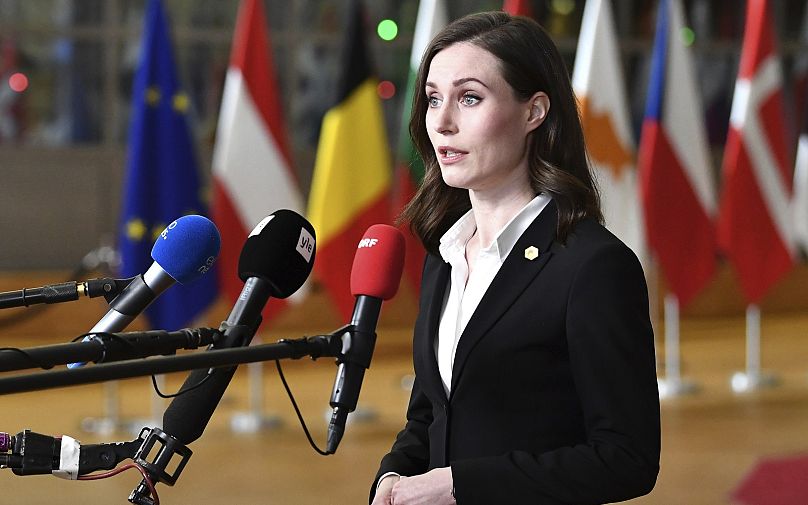
The Nordic countries are always winning when it comes to the happiness race. Finland took the top spot for the sixth year in a row in 2023, followed by Denmark and Iceland. But why are they so consistently happy?
Some say it’s because they are small, homogenous, and wealthy. Several years ago, a research paper even suggested it was because they are genetically bound to be happier.
But according to the World Happiness Report (WHR), such theories are inaccurate.
First, let’s talk about money
Yes, Nordic countries are all relatively rich and happy, but not all relatively rich nations are happy like the Nordics. Singapore, one of the wealthiest in the world, sits at 25th place, while Saudi Arabia, the world’s seventh richest, sits at 26th.
The one money factor we should look into is that Nordic countries are known for having low levels of income inequality, yet researchers have not proven that it actually correlates with high life satisfaction. However, what they have been able to prove is that if income inequality leads to mistrust, then it does directly contribute to lower life satisfaction. Simply put, people really do hate feeling cheated.
Must be genetics, then. Are they biologically predisposed to be happy?
Even if the answer to that question was a resounding yes, that would only paint about a third of the picture.
Science has been telling us for years that genetics play a role in explaining people’s satisfaction with their lives. It’s what the happiness experts call the ‘biomarkers’ of happiness.
However studies tell us that 60 to 70 per cent of the difference in happiness between people is caused by environmental factors, so only the remaining 30 to 40 per cent is attributable to genetics.
It’s not because they are ‘small’ and ‘homogenous’ nations
The WHR authors also say they have failed to show a relation between the size of a country’s population and life satisfaction.
And what’s more, Nordic countries are not exactly homogenous. Around 8 per cent of the Finnish population is foreign-born, about the same percentage as in Denmark, where 7.5 per cent is foreign. That’s not that different from countries such as France, where immigrants make up around 10 per cent of the population.
Professor John F. Helliwell
Editor, World Happiness Report
And if you still argue that 10 per cent is significant, findings from the 2018 World Happiness Report showed the share of immigrants in a country has no effect on the average level of happiness of those locally born.
Of the happiest countries, 10 on the list had a common share of immigrants averaging 17.2 per cent, which is about twice as much as the global average.
And what is most important yet. Other analyses show that the effect of ethnic diversity on social trust becomes unimportant when there are quality government institutions. And this leads us to the binding element behind Nordic happiness: trust.
We asked the editor of the World Happiness Report, Professor John F. Helliwell, who has been working on happiness surveys for 25 years: how can nations be happy, Nordic style?
«The simple answer is to be high on all of the six variables,» he jokes, referring to the six key indicators in the World Happiness Report — GDP per capita, social support, healthy life expectancy, freedom, generosity, and corruption.
«But where they [the Nordics] are really top on, is in trust and benevolence, both within their official institutions and their private behaviour».
What does that mean, in practice? This is what experts think it comes down to.
Is it because they are homogenously happy?
For the first time in 2023, the World Happiness Report evaluated the size of the happiness gap between the more and less happy halves of the population. A higher ranking means lower happiness inequality.
The Nordic countries all rank high in equality, meaning the inequality of happiness is virtually non-existent. Most of their populations consider themselves to be happy.
“And it turns out that people are happier living in countries where the happiness gap is smaller. And where is the happiness gap the smallest? Well, in the happy countries,” said Helliwell to Euronews Next.
Conversely, Afghanistan also had one of the smallest happiness gaps in the 2023 WHR, “but for the worst of reasons: nobody’s happy”.
The quality of government institutions and welfare state generosity
These have an important and positive impact on life satisfaction (so much in fact, that the Corruption Perception Index can work as a predictor of who will make it to the top or the bottom of the happiness ranking).
Data shows people are more satisfied with their lives in countries where there is institutional quality. That’s usually divided into the democratic quality and delivery quality. The latter is the one more strongly related to citizen happiness, according to the WHR: good pensions, generous parental leaves, maintenance for the ill and disabled, free health and education, solid unemployment benefits, etc.
Quality government institutions are successful at making inequality levels very low, and that makes people happy because they feel they can trust their public institutions.

‘Trust is terribly important’
That’s according to Helliwell. One of the experiments they’ve developed to test and prove the importance of trust is by asking people if they thought their wallet would be returned if they lost it.
The researchers compared how likely a respondent thought their lost wallet would be returned with their score of life satisfaction. The results showed that those who expected their wallet to be returned had a life evaluation of more than one point higher on a scale of zero to 10.
In other words, people who trusted their wallets would be returned considered themselves to be happier than those who didn’t.
Reader’s Digest, an American company, conducted a similar experiment globally in 2021. Can you guess which city had the most wallets returned? Helsinki.
The World Happiness Report uses the Gallup World Poll as the principal source of data and asks respondents to provide a broad “life evaluation” using the mental image of a ladder, with the best possible life for them as a 10 and the worst possible as a zero.
Liberal values are key: progressive taxation and freedom to make life choices
So, we’re back to money.
Researchers have come up with a strong link between progressive taxation — a tax rate that increases as the taxable amount increases — and people’s assessment of how happy they are.
Progressive taxation leads to happiness via public and common goods such as health care, education, and public transportation that the taxation helps to fund. And ultimately, you guessed it, trust. People trust the money will be used and distributed wisely.
Again, in more equal societies, people trust each other more. And social trust contributes to the building of better institutions.
What about the high rates of suicide in Nordic countries?
If you look at the prevalence of positive emotions in various countries throughout the World Happiness reports, Latin America usually occupies the top, yet these countries do not even make it to the top 20 in the overall ranking for happiness.
On the other hand, Nordic countries come out as the happiest, but that’s not where people report the most frequent positive emotions.
In fact, as my colleague Tim Gallagher reported, the way people from the Scandinavian nations perceive themselves is quite melancholic.
Nordic countries have a historic association with high suicide rates. In 1990, for example, Finland’s suicide rate was so high that the country created and implemented the world’s first suicide prevention strategy.
Today, trends in the region have much improved, but Finland still ranks fourth in youth suicide rates.
Helliwell says the happiness model “fits perfectly” with the regrettable statistics.
For example, the measure that qualifies the quality of government “is very important in supporting people’s life satisfaction, but not so important in preventing suicide,” he said.
“Religious belief is very important in stopping suicides, but not so important in producing happiness with life. Divorce is bad for both, but it’s worse for suicides than it is for life evaluations.
“Sweden, for example, with a high-quality government, high rates of divorces and low religious affiliation is going to have a higher predicted suicide rate, relative to their happiness”.
Ultimately, this means that the same indicators that predict happiness are not necessarily linked with the likelihood of suicides.
The unfortunate trend could be explained by cultural factors, says Helliwell.
“We find that suicide, like some other kinds of anti-social behaviour, have a certain cultural aspect to them…just as you have addictions of various kinds being concentrated in regions because of a sort of local positive feedback,” he told Euronews Next.
“In this case, it’s negative feedback, in a sense, and people copying other people’s unfortunate behaviour as a coping mechanism”.
The weather doesn’t have much influence on your overall happiness
The warmest annual average temperature in southwestern Finland is 6.5 °C. And from there, eastward and northward, the average temperature only decreases.
It is true that Nordic winters are long, dark and cold, and most of us associate warmer temperatures and bright sunny days with happiness. But findings from the report suggest the effect on the happiness score is quite insignificant.
People adapt to the weather, meaning heavy rain, snowstorms and sub-zero temperatures do not typically affect the life satisfaction of those who are used to living under those circumstances.

So, what can we do to be happy like the Nordics?
The Nordic countries have managed to enter a very virtuous cycle, where efficient and democratic institutions are able to provide citizens security, so that citizens trust institutions and each other, which leads them to vote for politicians that promise and deliver a successful welfare model.
However, there are some things you can actually do.
«We find people are much, much happier if they feel they’re in an environment where people are going to watch their back. And it’s really important to tell people that because they fail to understand all over the world how generous other people are,» says Helliwell.
He says that the trust we place in others is in fact higher than what we take it to be. Lacking this trust makes us unhappy. Or at least, not happy like the Nordics.
Helliwell also says one of the reasons people underestimate the benevolence of their neighbours is because they don’t hear about it in the media.
«Which makes a case for good news and shows they are really important because it’s what determines what you think of your neighbours,» he said.
